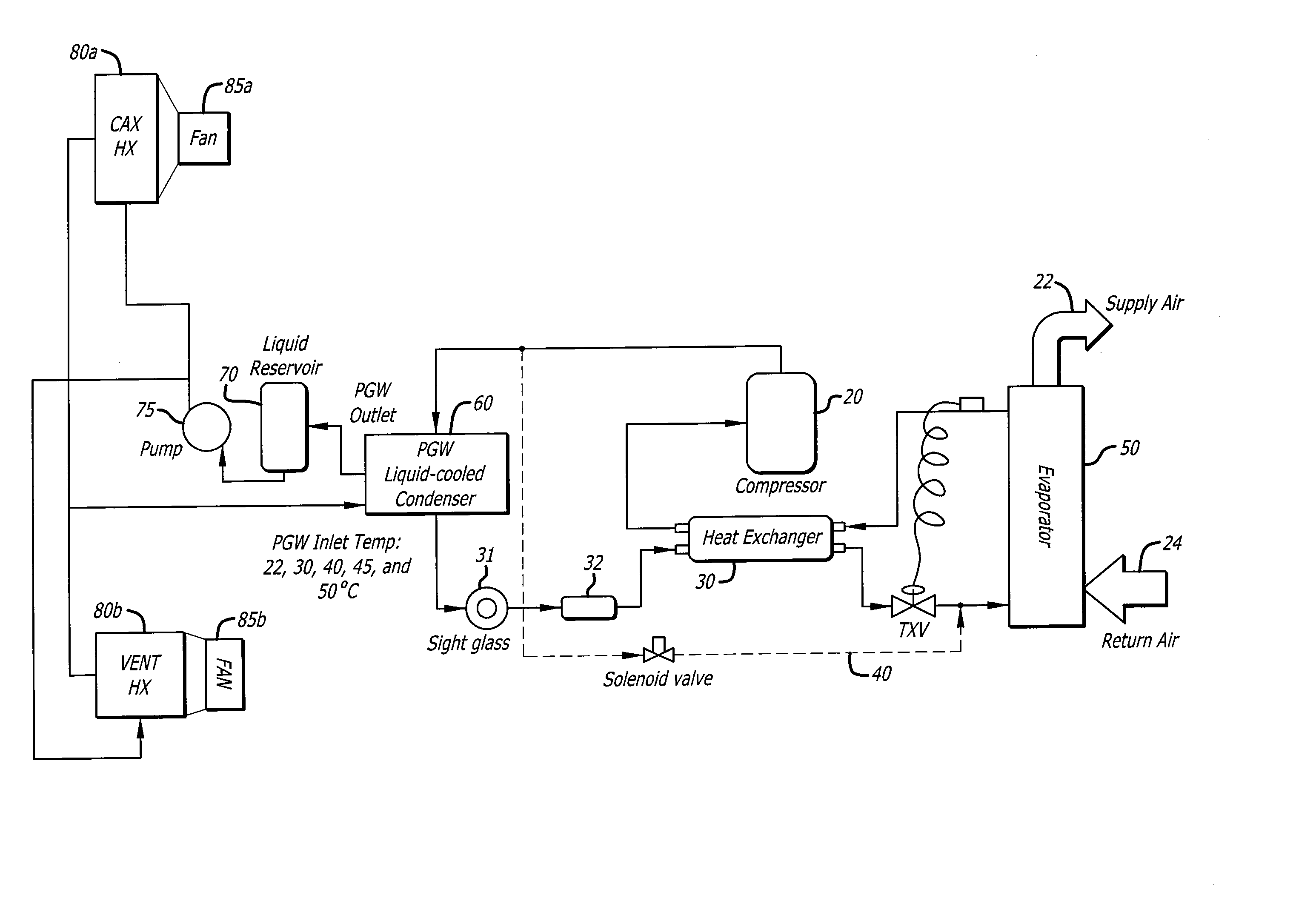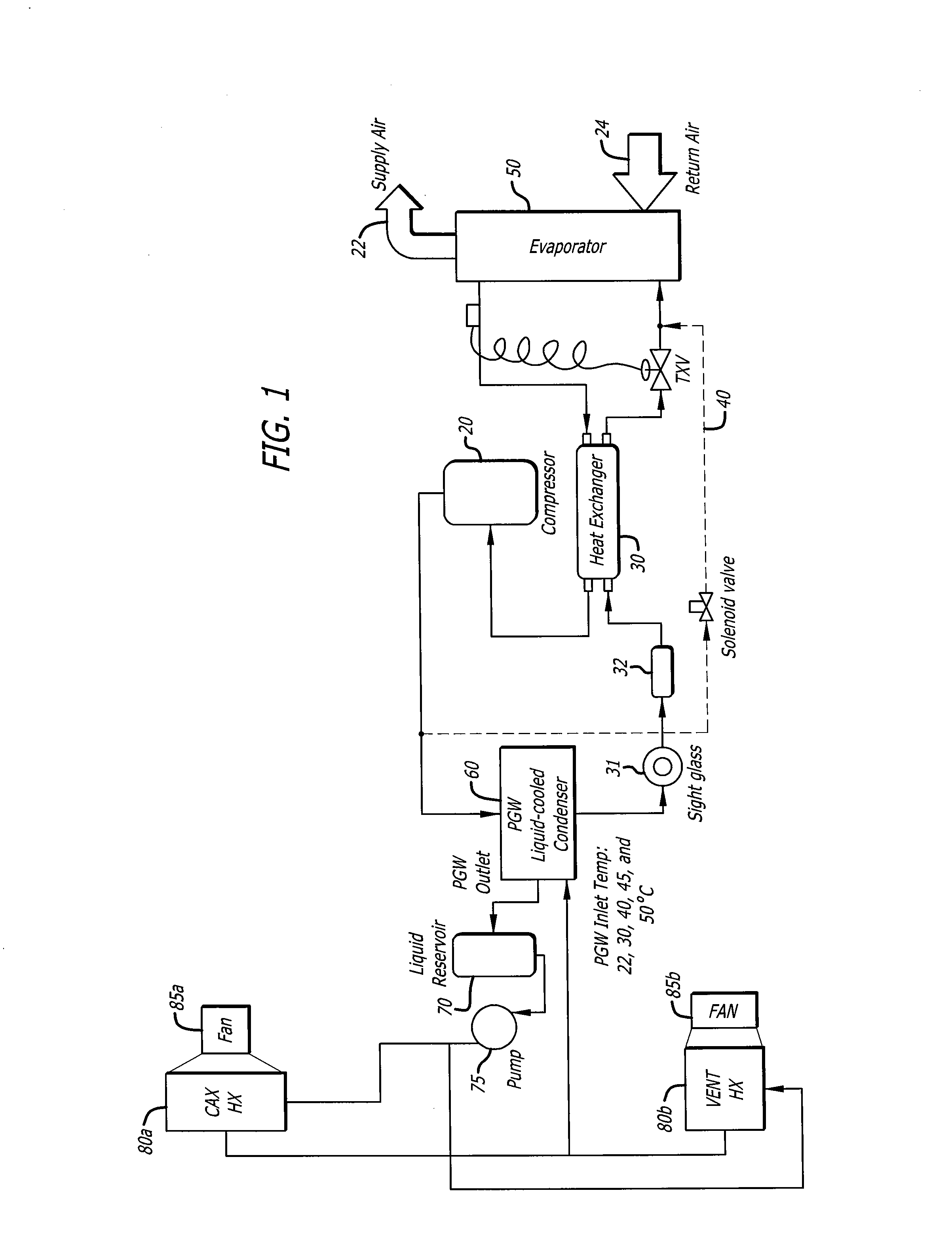Aircraft galley air chiller system
- Summary
- Abstract
- Description
- Claims
- Application Information
AI Technical Summary
Benefits of technology
Problems solved by technology
Method used
Image
Examples
example 1
Liquid-Cooled Point of Use Chiller
[0016]Cooling capacity: 700 W (Ground case), and 300-400 W (In flight case)
[0017]Coolant: PGW (60 / 40)
[0018]Electronic controller with display panel.
Liquid Pump and Reservoir Assembly:
[0019]Liquid pump: 4 l / m with 50 Psi. pressure rise
[0020]Reservoir: Aluminum light weight design
[0021]Located in aircraft CAX air system,
[0022]Maximum airflow: 40 l / s
[0023]Inlet temperature: 22° C. (in flight), and 29° C. (Ground, worst case)
[0024]Max. outlet air temperature: 70° C.
[0025]Located in aircraft floor heater area,
[0026]Maximum airflow: 100 l / s
[0027]Inlet temperature: 22° C. (in flight), and 29° C. (Ground, worst case)
[0028]Max. outlet air temperature: 25° C.(to thermal comfort zone), 70° C. (to lower level)
[0029]FIG. 2 illustrates a galley cart compartment 100 filled with beverage / serving carts 110 used in food and beverage service for an aircraft. The carts 110 are arranged side-by-side in the galley cart compartment 100, w...
PUM
 Login to View More
Login to View More Abstract
Description
Claims
Application Information
 Login to View More
Login to View More - R&D
- Intellectual Property
- Life Sciences
- Materials
- Tech Scout
- Unparalleled Data Quality
- Higher Quality Content
- 60% Fewer Hallucinations
Browse by: Latest US Patents, China's latest patents, Technical Efficacy Thesaurus, Application Domain, Technology Topic, Popular Technical Reports.
© 2025 PatSnap. All rights reserved.Legal|Privacy policy|Modern Slavery Act Transparency Statement|Sitemap|About US| Contact US: help@patsnap.com



